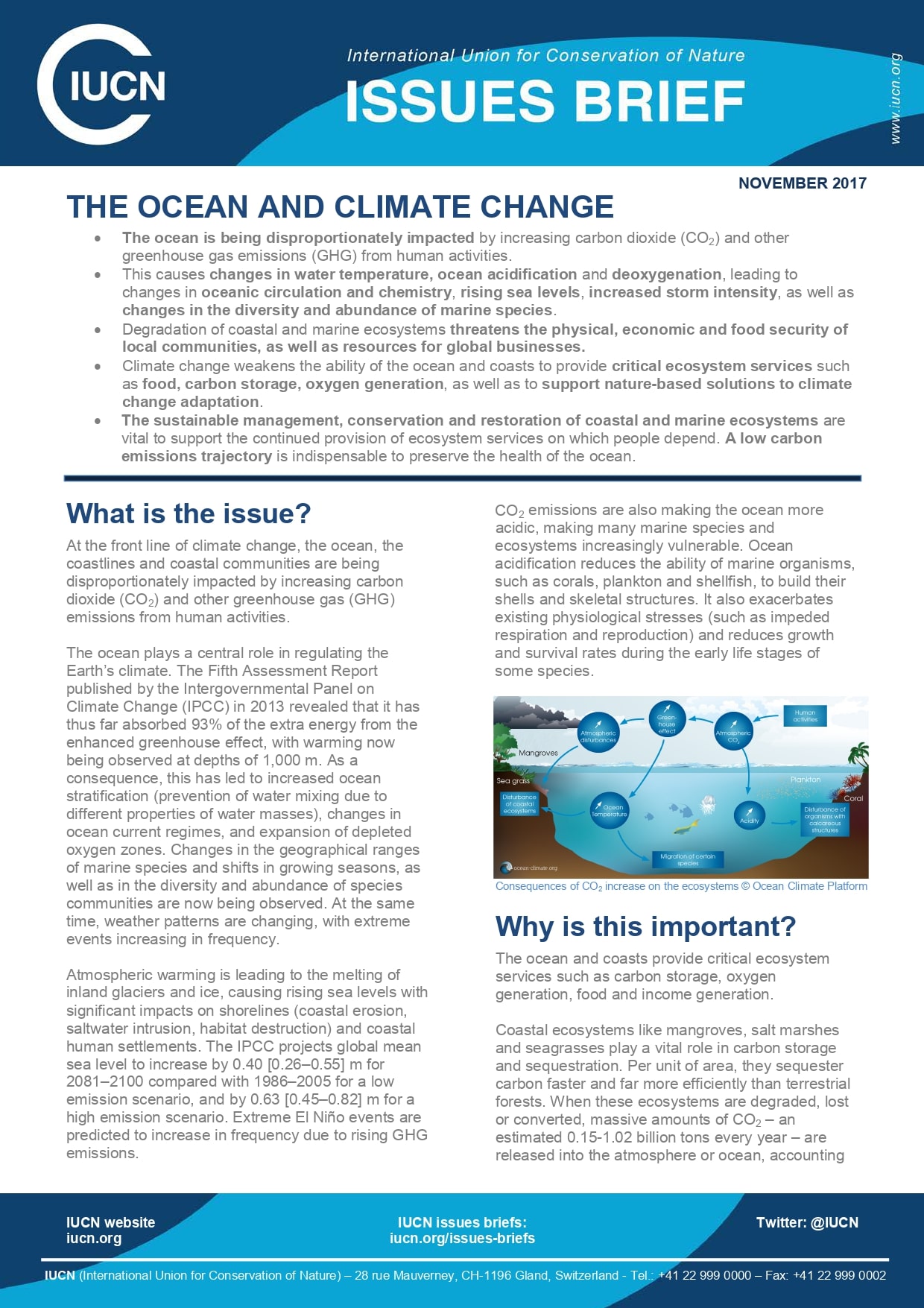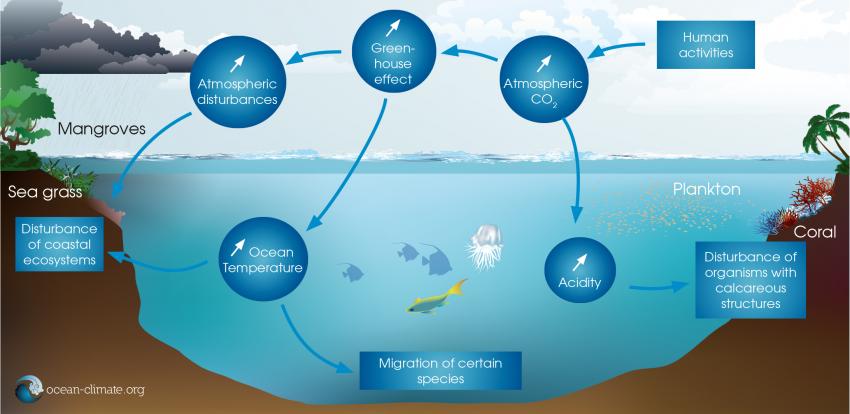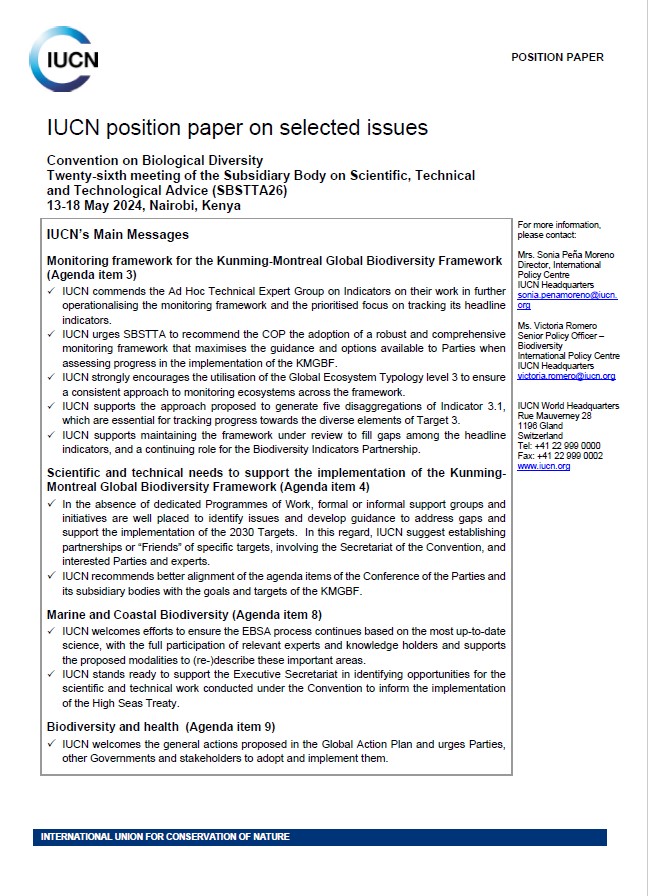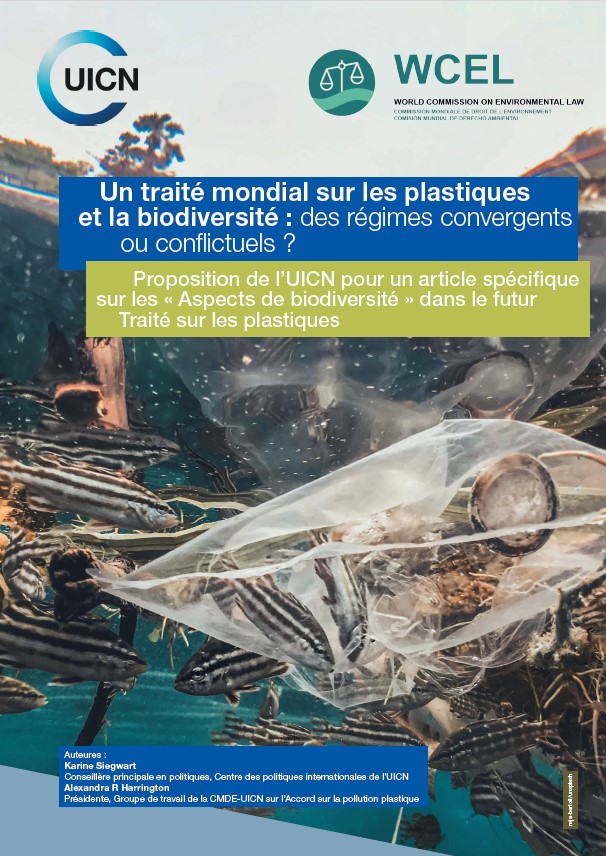What is the issue?
At the front line of climate change, the ocean, the coastlines and coastal communities are being disproportionately impacted by increasing carbon dioxide (CO2) and other greenhouse gas (GHG) emissions from human activities.
The ocean plays a central role in regulating the Earth’s climate. The Fifth Assessment Report published by the Intergovernmental Panel on Climate Change (IPCC) in 2013 revealed that it has thus far absorbed 93% of the extra energy from the enhanced greenhouse effect, with warming now being observed at depths of 1,000 m. As a consequence, this has led to increased ocean stratification (prevention of water mixing due to different properties of water masses), changes in ocean current regimes, and expansion of depleted oxygen zones. Changes in the geographical ranges of marine species and shifts in growing seasons, as well as in the diversity and abundance of species communities are now being observed. At the same time, weather patterns are changing, with extreme events increasing in frequency.
Atmospheric warming is leading to the melting of inland glaciers and ice, causing rising sea levels with significant impacts on shorelines (coastal erosion, saltwater intrusion, habitat destruction) and coastal human settlements. The IPCC projects global mean sea level to increase by 0.40 [0.26–0.55] m for 2081–2100 compared with 1986–2005 for a low emission scenario, and by 0.63 [0.45–0.82] m for a high emission scenario. Extreme El Niño events are predicted to increase in frequency due to rising GHG emissions.
CO2 emissions are also making the ocean more acidic, making many marine species and ecosystems increasingly vulnerable. Ocean acidification reduces the ability of marine organisms, such as corals, plankton and shellfish, to build their shells and skeletal structures. It also exacerbates existing physiological stresses (such as impeded respiration and reproduction) and reduces growth and survival rates during the early life stages of some species.






